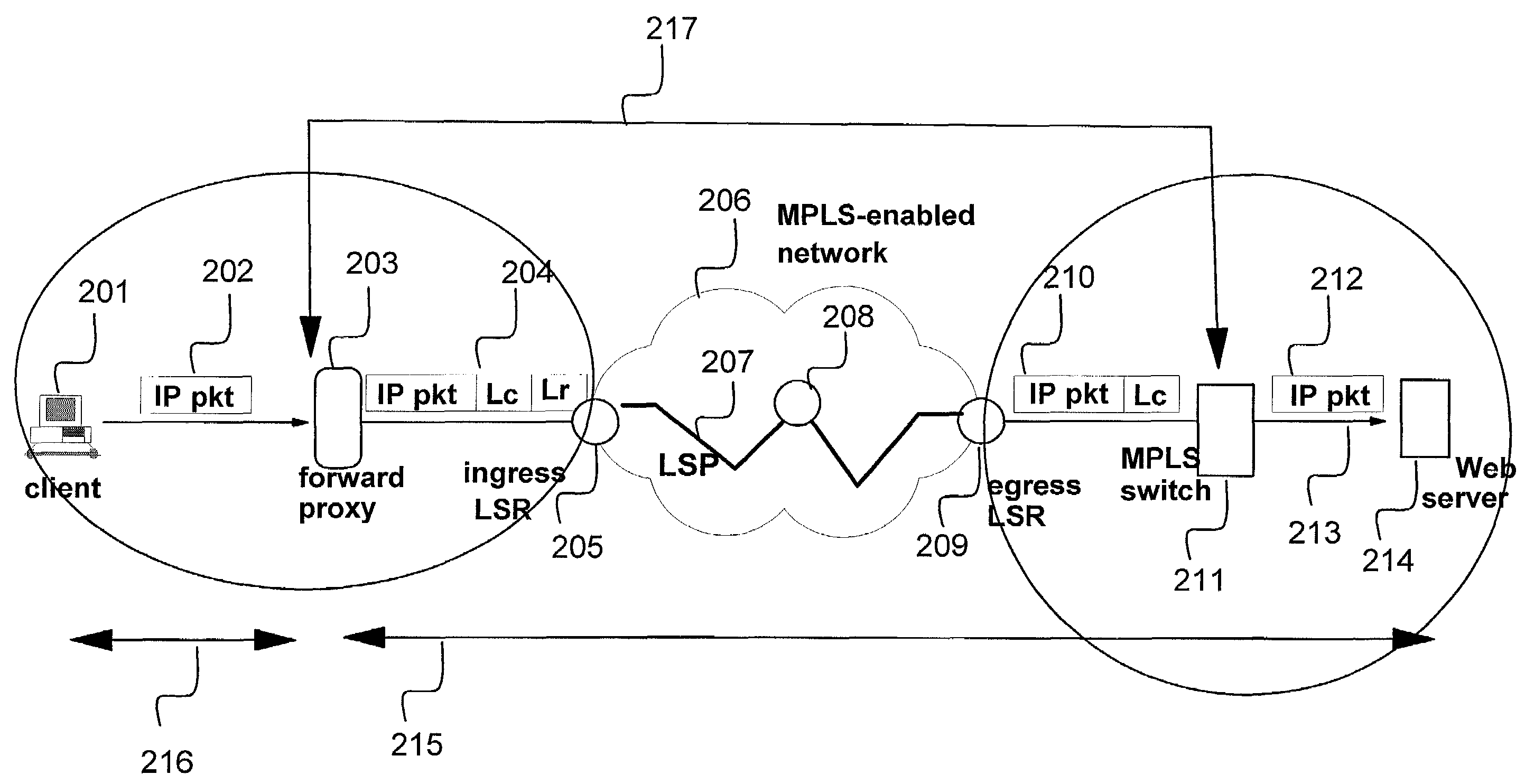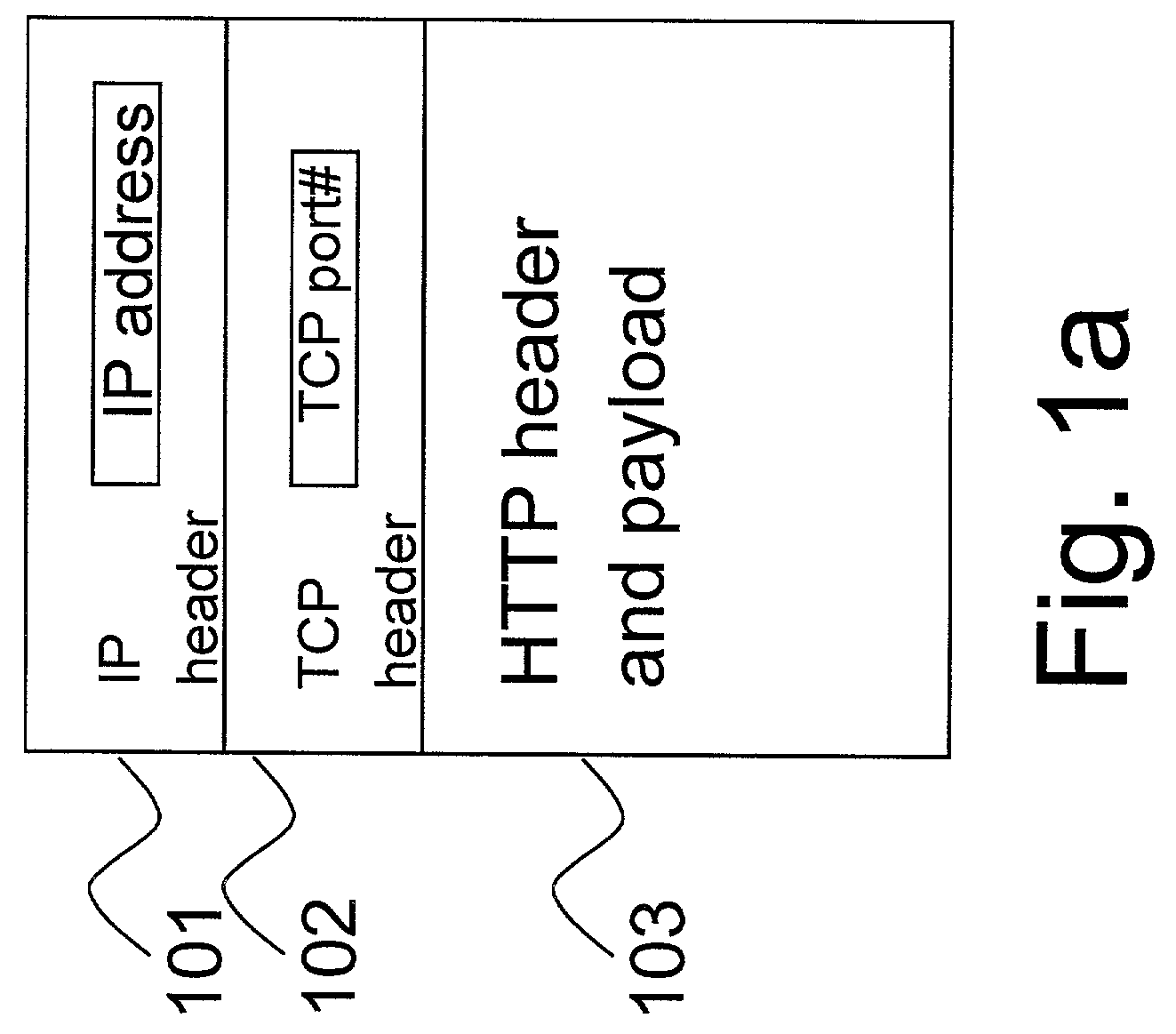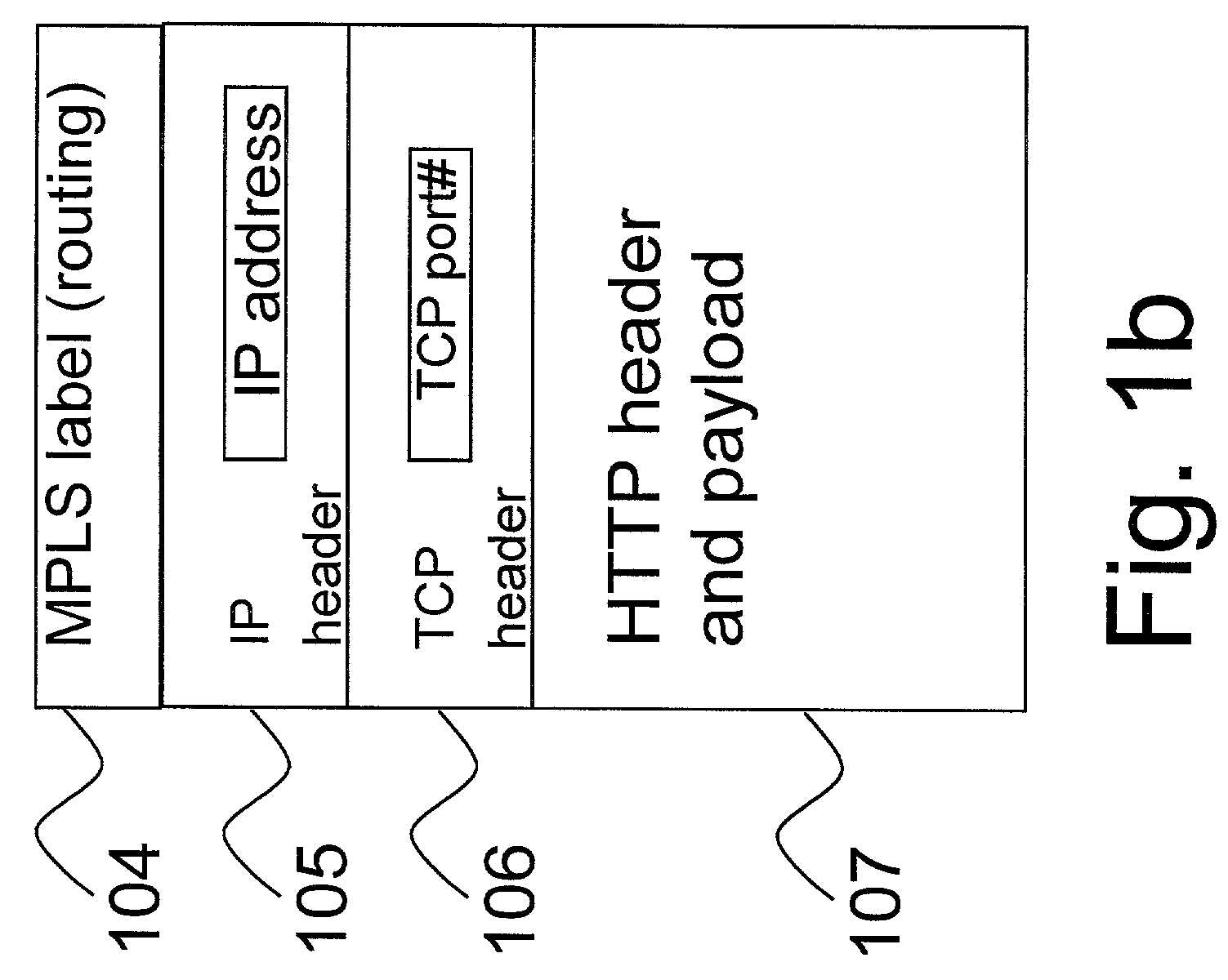Method and apparatus for content-aware web switching
a web switching and content technology, applied in the field of computer networks, can solve the problems of scalability and performance limitations of layer-7 dispatchers, while more sophisticated, and achieve the effect of high-performance web switching
- Summary
- Abstract
- Description
- Claims
- Application Information
AI Technical Summary
Benefits of technology
Problems solved by technology
Method used
Image
Examples
first embodiment
[0034]FIG. 2 describes the basic idea of our The core network 206 is now assumed to be MPLS enabled includes of Label Switching Routers (LSRs) such as 205, 208 and 209. A Label switched Path (LSP) is a sequence of hop-by-hop labels where at each LSR, the label of the incoming packet is used to index into a routing table that provides the next hop that the packet should be forwarded on, as well as the label to be applied to the packet on the outgoing link replacing the incoming label. This label replacement operation and table lookup based on a fixed-length label lends itself to very efficient hardware implementation. FIG. 2 shows an example of a LSP (207) within the core MPLS network traversing the LSRs 205, 208 and 209. The basic idea of our first method is to label packets belonging to a specific web connections such that the network dispatcher function can now be implemented by a standard MPLS switch 211 thereby avoiding the need for TCP termination at the dispatcher, in that it...
second embodiment
[0059]An example of an apparatus which implements the forward proxy system is shown in FIG. 11a. The forward proxy 1101 in the figure includes of four primary components. The HTTP proxy 1102 handles standard proxy functionality including receiving Web requests from clients and making corresponding connections to the appropriate server. The label map and label communicator module 1105 receives request-to-label mappings from the reverse proxy, perhaps via a persistent connection as shown in FIG. 2, (217). It stores the request-to-label mappings in a local database. The request inspector module 1103 is responsible for examining the client request and choosing the appropriate label for use in the connection, based on the content being requested or the client identity, for example. The label applicator 1104 applies the chosen label on each outgoing packet of the client connection to enable content-aware web switching at the dispatcher. In the case of the second embodiment using TCP port ...
PUM
 Login to View More
Login to View More Abstract
Description
Claims
Application Information
 Login to View More
Login to View More - R&D
- Intellectual Property
- Life Sciences
- Materials
- Tech Scout
- Unparalleled Data Quality
- Higher Quality Content
- 60% Fewer Hallucinations
Browse by: Latest US Patents, China's latest patents, Technical Efficacy Thesaurus, Application Domain, Technology Topic, Popular Technical Reports.
© 2025 PatSnap. All rights reserved.Legal|Privacy policy|Modern Slavery Act Transparency Statement|Sitemap|About US| Contact US: help@patsnap.com



